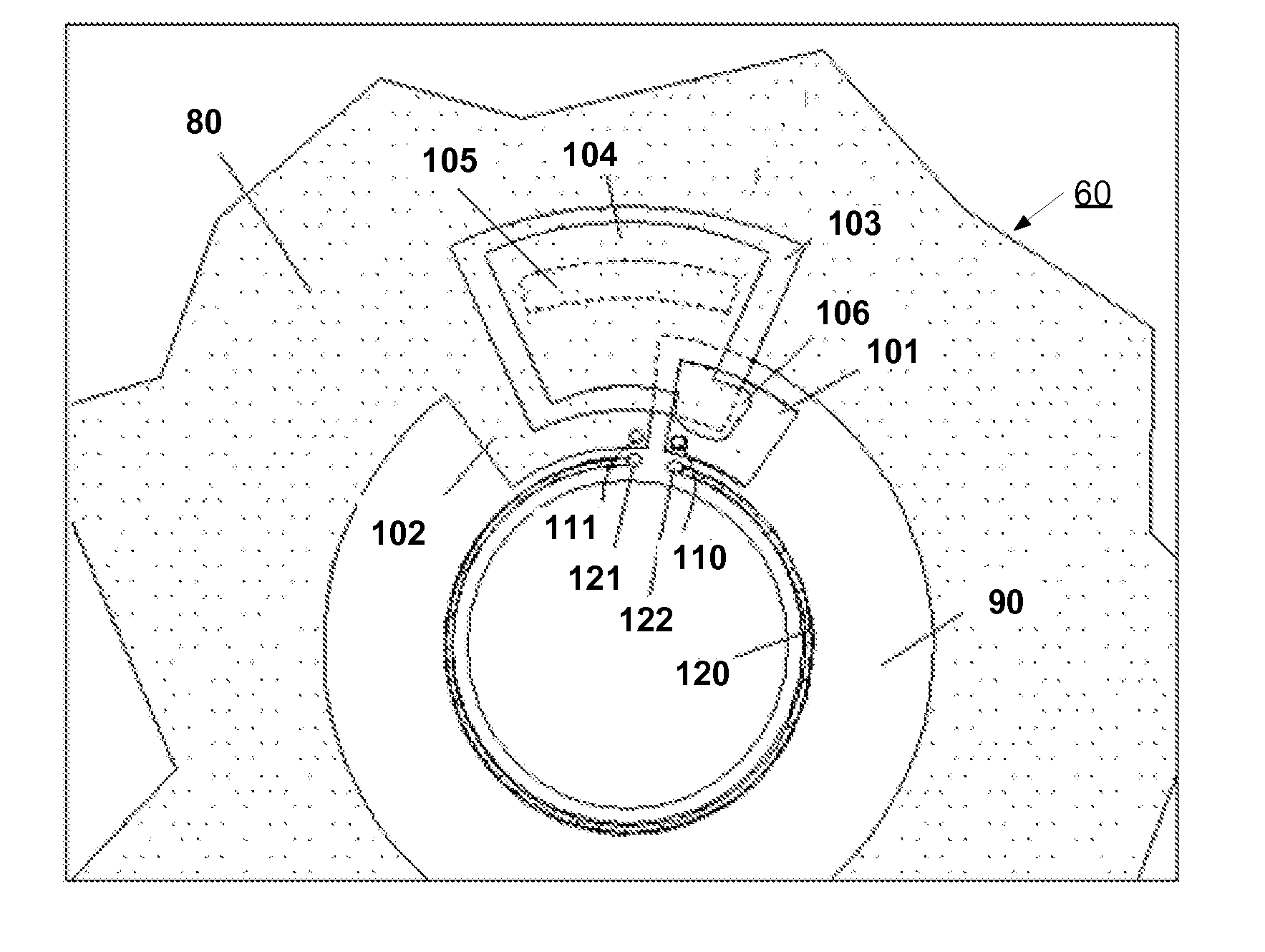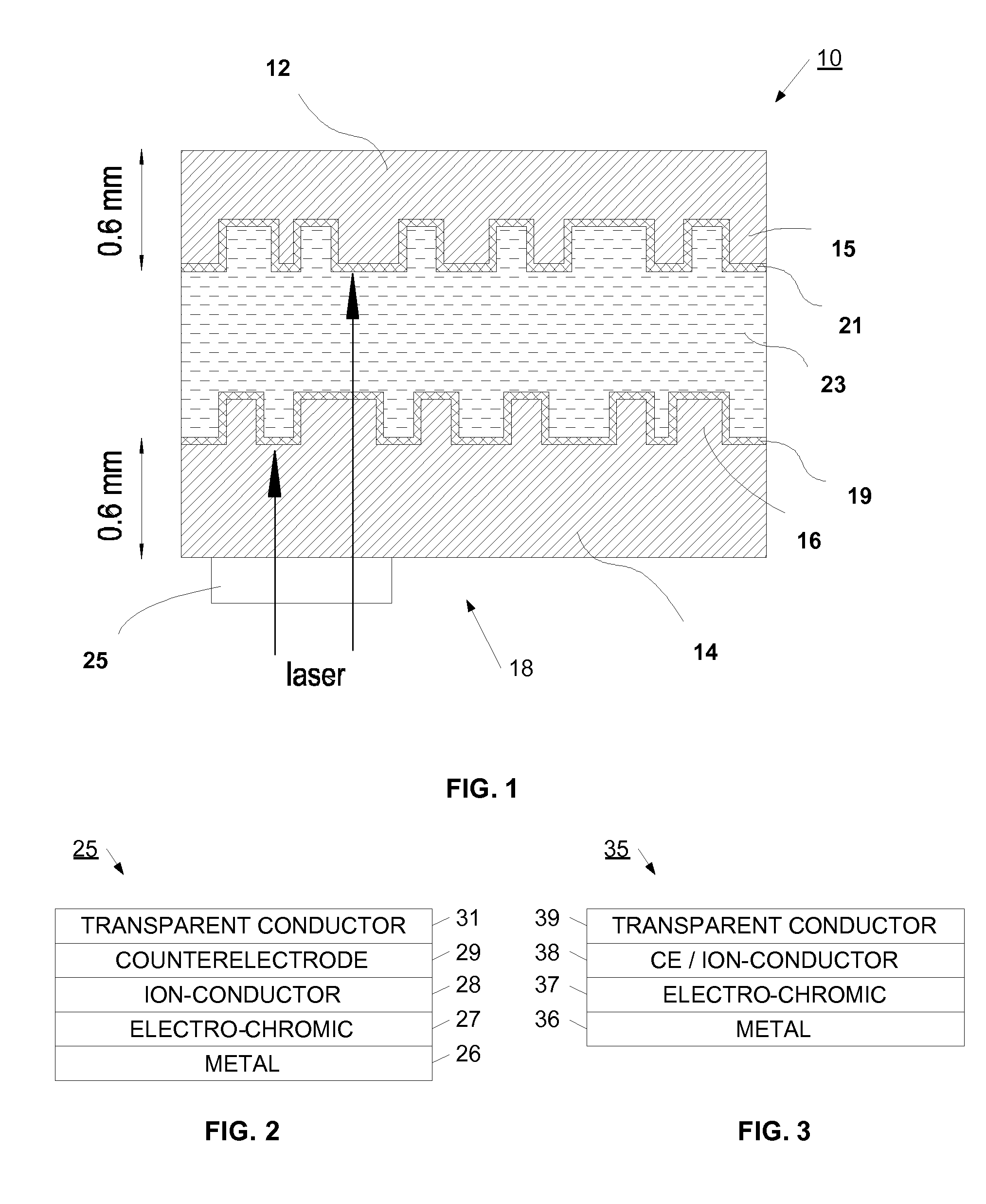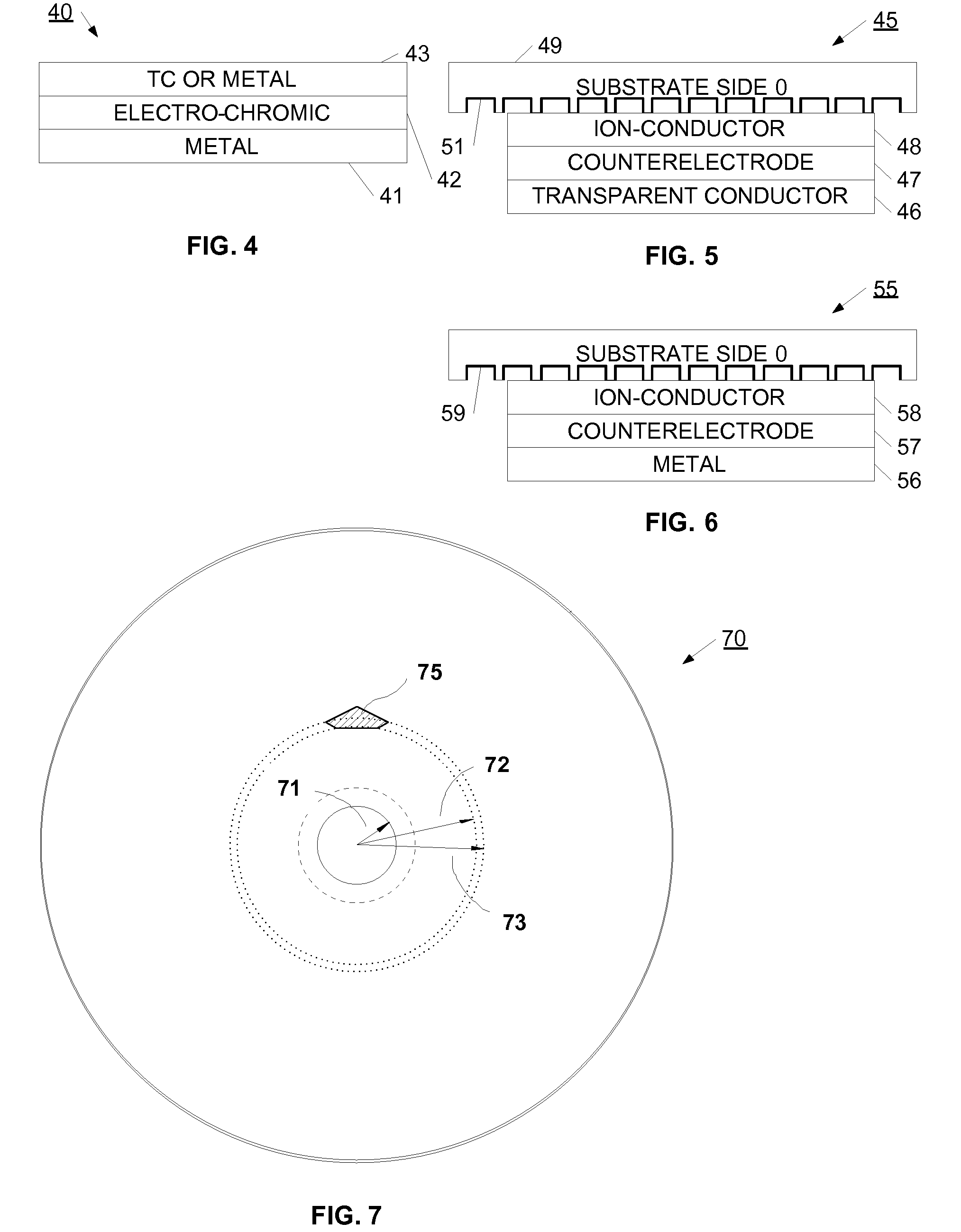Structures and processes for controlling access to optical media
a technology of optical media and control structures, applied in the direction of protective material radiating elements, instruments, recording signal processing, etc., can solve the problem that the player is not able to effectively read the disc, and achieve the effect of facilitating state change, reducing transition edge effects, and reducing interferen
- Summary
- Abstract
- Description
- Claims
- Application Information
AI Technical Summary
Benefits of technology
Problems solved by technology
Method used
Image
Examples
example 1
EC device with MoO3+AlF3 Counterelectrode Processed by PVD
[0088] A set of four EC devices were fabricated on a conductive tin oxide coated glass by depositing coatings using physical vapor deposition (PVD). This was a five layer device similar to the one shown in FIG. 2 comprising of an EC layer, ion conductor and a counterelectrode sandwiched between two conductors. The devices were appropriately masked from each other to generate four independent devices in a size of about 1.5 cm×1.5 cm. The first layer was 500 nm tungsten oxide evaporated by an electron beam. Then 60 nm thick lithium metal was evaporated to dope and reduce tungsten oxide to its colored bronze (corresponding to about 24 mC / sq.cm of charge). An ion conductor comprising aluminum fluoride and lithium was deposited next in a thickness of 500 nm. This was followed by a counter electrode comprising about equal proportions of molybdenum oxide and aluminum fluoride in a thickness of 100 nm and the top conductor which was...
example 2
EC Device with NiO Counterelectrode Processed by PVD
[0089] Another set of devices was fabricated as in Example 1. however, in this case the counterelectrode was 120 nm thick nickel oxide. At 650 nm, this device in colored state was 2.6% transmitting and in the bleached state the transmission was 15.1%. The colored state transmission at 405 nm was 6.9% and 22.6% when bleached.
example 3
Electrochromic Polyaniline (PA) Coating
[0090] PA was deposited on ITO coated glass. The coating was deposited from a solution comprising formic acid and ascorbic acid. The coated substrate was heated to 70° C. for 15 minutes to remove the volatile products and solidify the coating. The 300 nm thick coatings were colorless as produced and were electrochromic as shown in FIG. 12 and the table below. FIG. 12 has a graph 120 that shows a % Transmission 121 versus wavelength 122 for the ITO substrate 123, the reduced PA 124, and the oxidized PA 125.
% Transmission at650 nm550 nm405 nmPolyanilineBleached71.675.852.8Colored28.750.018.2ITO substrate only84.087.773.4
PUM
 Login to View More
Login to View More Abstract
Description
Claims
Application Information
 Login to View More
Login to View More - R&D
- Intellectual Property
- Life Sciences
- Materials
- Tech Scout
- Unparalleled Data Quality
- Higher Quality Content
- 60% Fewer Hallucinations
Browse by: Latest US Patents, China's latest patents, Technical Efficacy Thesaurus, Application Domain, Technology Topic, Popular Technical Reports.
© 2025 PatSnap. All rights reserved.Legal|Privacy policy|Modern Slavery Act Transparency Statement|Sitemap|About US| Contact US: help@patsnap.com



